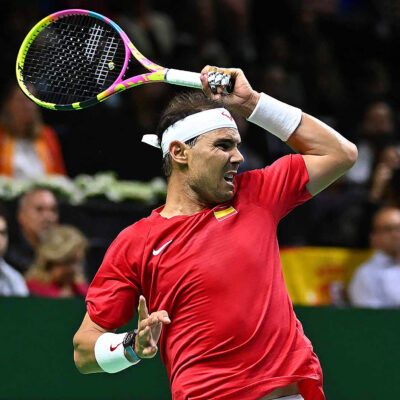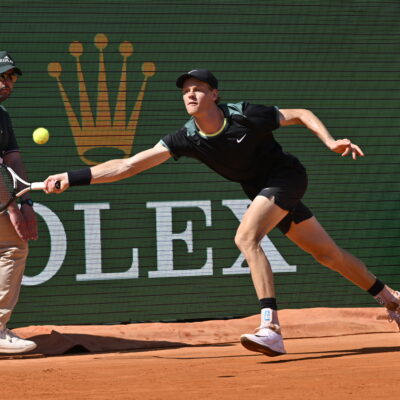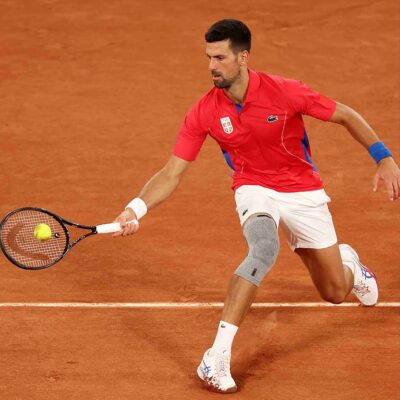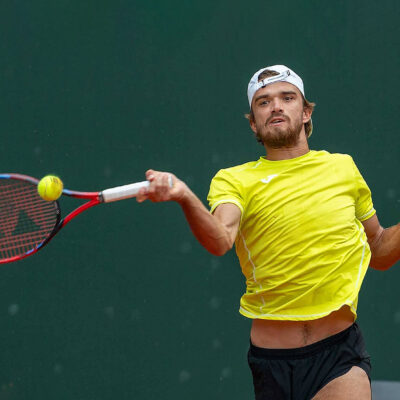Founded in Lyon, France in 1875, Babolat invented racket strings. It is the oldest company in the world specialising in racket sports .
The double line logo is the company trademark – while, black or yellow on its frames or black or red on its strings)
We have all seen it – and wondered who Babolat are.
In 2018 Babolat is in over 100 countries, in about 20,000 sports stores and can be seen patterning 20,000 clubs.
[quote]Babolat today offers ‘the’ complete range of tennis equipment.[/quote]
But let’s go back in history and look at Babolat’s fantastic relationship with the sport of tennis, which is said to have been ‘officially’ created by one Walter Wingfield in 1874.
A year later Pierre Babolat created the very first tennis strings – made from natural gut!
The street moves on to the 1920s when Albert Babolat developed tickets for the famous French “Musketeers” of Jean Borotra, Jacques Brugnon, Henro Cochet and Rebe Lacoste.
The strings of that era set a benchmark for others to follow and the Babolat natural gut string to this day is unrivalled.

The Musketeers, along with French ladies legend Suzanne Lengien, won an amazing 20 Grand Slam titles and 6 Davis Cups.
Post World War 2, tennis became a global game and the name Babolat was synonymous with quality – it still is.
A global network of distributors soon took the Babolat name to every corner of the globe and in 1955 the company created Elascord, the first synthetic string.
Along with the clever Babol product line to manage and extends the life of its strings, tennis players coated their strings with baby spray to prolong their strength and durability.
Babolat rackets have been used – and are used – by tennis champions the world over.
[quote]The legendary American Arthur Ashe won Wimbledon in 1968 as an amateur – using Babolat strings.[/quote]
The 1980s saw the innovative babolat brand introduce an electric stringing machine, and staff would attend tournaments with their hi-tech equipment to ensure players received the very best service.
Swede Bjorn Borg was one of those players.
The revolutionary Elastocross was launched in 1982 and quickly became the ‘must-have’ for all the leading players. Elastocross enabled the strings to reposition after each exchange, increasing its working life, but also making it an unbeatable piece of tennis equipment.
Soon came multifilament strings as records fell – Pete Sampras – 14 Grand Slams and a Wimbledon champion seven times.

By the 1990s racket stringing was a very serious science. Babolat’s diagnostic centres could diagnose and adjust strings to maximum benefit in minutes.
Such was the company’s success that in 1994 it launched its own range of rackets. Carlos Moya won the French Open in 1998 using a Babolat racket.
A year later Babolat launched the ‘woofer’, a system built into the bracket that allowed for total interaction between strings and racket when hitting the ball.
Soon followed Babolat tennis balls, Babolat sports shoes and apparel, then the revolutionary ‘aero’ racket, used so successfully by Rafael Nadal.
The new millennium saw Babolat become a major name on the world scene – launching in the US and in Japan, every year staying on front of its competitors in an every changing tennis grand slam year.

So who uses Babolat?
Nadal., of course. But how about this impressive list of names … Jo-Wilfried Tsonga, Dominic Thiem, Julien Benneteau, Sam Stosur, Caoline Wozniacki, Garbine Muguruza, to name just a few.
Babolat has even developed a racket that will record your every stroke and analyse it to help you better your game.
Quite clearly, if you want to win a Grand Slam – then you must have Babolet on your team.

DID YOU KNOW…
It is no simple task preparing a racket. There are multiple steps; removing the old strings and cleaning the racket. The stringing the racket, checking weight, swing weight and balance – each player has an individual requirement, stencilling the Babolat logo on to the strings and finally securing all the work in an air-tight plastic bag, ready for the player to collect – and use.
* 58 km of string was used at the 2017 Grand Slam tournament in Paris.
* It takes on average 20 minutes to string a racket during a Grand Slam tournament.
* At Roland Garros 17 Babolat stringers are on hand to perform the work, from 10 different nationalities.
* In 2017 Babolat prepared and delivered 5,000 rackets at the French Open.
* 90 per cent of players at RG used the Babolat service.
* 60,000 Babolat tennis balls were used at the 2018 French Open.

http://www.babolat.com





